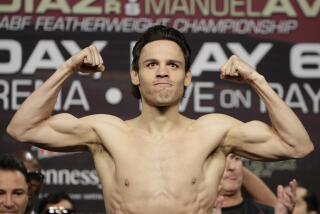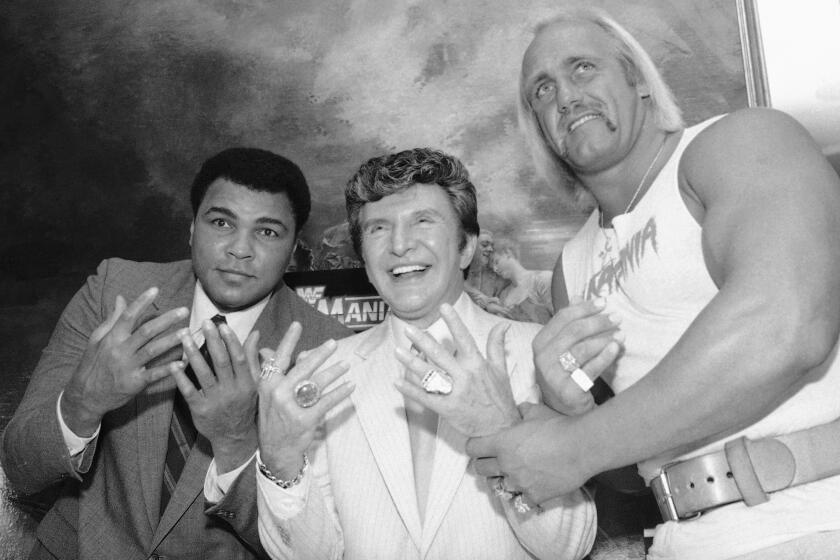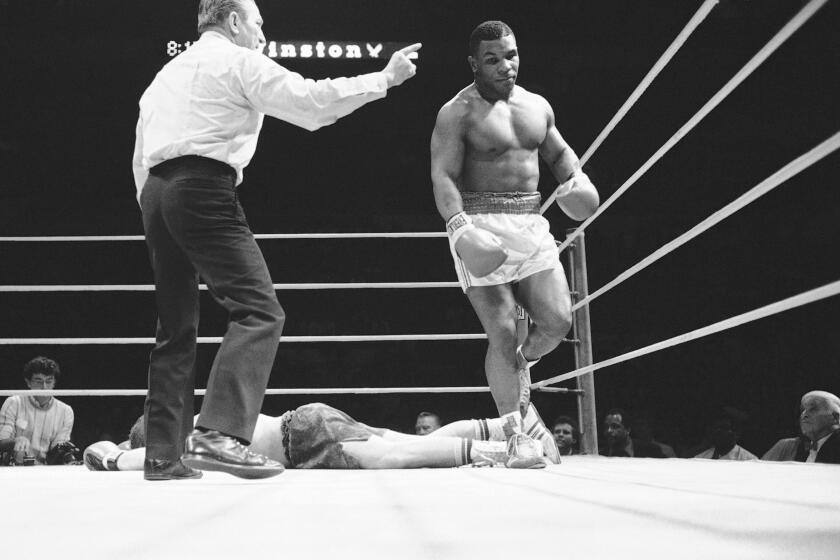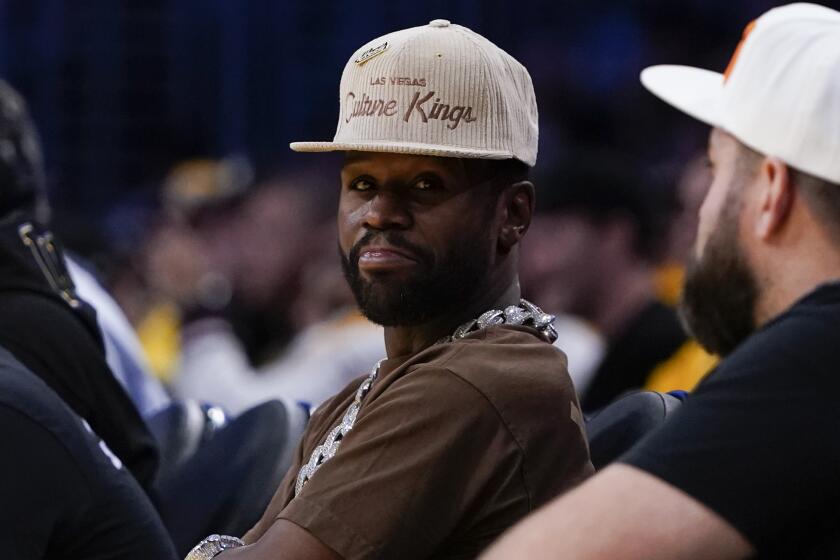Jaime Munguia and Erik Morales combine to form Team Tijuana
A few short steps away from drug activity and brothels sits an unassuming storefront on the corner of Coahuila and 5 de Mayo in Zona Norte, Tijuana, one of the toughest neighborhoods in all of Baja California.
A grocery store is on the first floor, while on the second floor, up an uneven, dimly lit staircase is ZNT Boxing, a tiny gym barren of modern-day boxing amenities.
You can walk a complete circle around the drab gym’s creaky hardwood floors in 30 seconds. There’s no treadmill, no workout equipment or weights. Just seven punching bags, an outdated sit-up machine and literal holes in the wall that double as a storage unit. The only ventilation that runs through the room comes courtesy of a corner ceiling fan and whatever windows still crank open. A row of five tattered chairs faces the ring, which is dangerously pushed up against a window. Just a few fight posters from events at the local bullrings are plastered on the wall. The shanty smells like a century-old sweatbox, yet appears bereft of history that should properly reflect its age.
To be a great boxer, you have to start at the bottom and work your way up. In many ways, Tijuana is perceived as the nadir, and although ZNT Boxing may have the exterior look of it, it’s far from what it seems like.
The gym might as well serve as Mexico’s boxing sanctuary because it’s been training grounds for a host of champions—and it’s been the home to Erik Morales for his entire life.
The International Boxing Hall of Fame fighter was born in the family home below a second-floor gym they owned. Morales started boxing in that gym under the tutelage of his father at age 6, and went on to become a four-division champion who beat 15 titleists and fought trilogies each with Manny Pacquaio and Marco Antonio Barrera.
Not too far away from Zona Norte is Xicotencatlleyva, a Tijuana town that’s equally tough and one that gave birth to another world champion in undefeated Jaime Munguia, the current World Boxing Organization junior middleweight titleholder.
When Munguia was born in 1996, Morales had already tallied 23 wins in his Hall of Fame career. His hellacious wars and entertaining “Mexican style” offense personified boxing at the turn of the millennium.
Canelo Alvarez will move up two weight divisions and face light heavyweight champion Sergey Kovalev on Nov. 2 at the MGM Grand in Las Vegas.
Munguia does not have much memory of Morales other than the clips that can be culled from YouTube, but the two have similar and relatable stories. They both survived rough Tijuana streets, were born into boxing families and went on to become undefeated champions by the age of 21.
The hard-hitting yet work-in-progress Munguia (33-0, 26 KOs) is coming off of an underwhelming majority decision win in April against Dennis Hogan, where vulnerable defense, controversial scorecards and lack of drug testing were called into question.
The Golden Boy-promoted Munguia knew a change had to be made following a subpar performance. He cut ties with Robert Alcazar, who for years was Oscar De La Hoya’s lead trainer, and instead, called for the help of a hometown hero. Erik Morales answered.
The former champion and protégé pairing will look to showcase a refined set of skills on Mexican Independence Day weekend on Saturday as they carry their country’s colors into Carson when Munguia takes on Patrick Allotey (40-3, 30 KOs). The fight will take place at Dignity Health Sports Park, stream digitally on DAZN and continue a prizefighting tradition on the holiday that De La Hoya made popular during his heyday.
“I feel very honored and happy to be representing my country on this important date. It’s also motivating to have legends in my corner,” Munguia told the Los Angeles Times after a recent workout in Tijuana. “Erik brings a lot of intelligence to camp. He knows what to do in the ring. He knows how to work on defense, and he gives me a lot of advice. It comes with his experience, and of course I execute what he says. It’s been a really good relationship, and I’m learning.”
Munguia, who’s still just a raw 22-year-old, will be making the fifth defense of his 154-pound title against the unheralded Ghanaian Allotey. It’ll be his last fight in the division because the big-bodied Munguia is struggling to shed weight from his 6-foot frame. Instead, he’s looking to climb up the scales and clash against fellow countryman and stablemate Canelo Alvarez in a bout sometime in the near future.
Before he bites off more than he could chew by calling out arguably boxing’s best fighter and biggest breadwinner, Munguia needed the help of “El Terrible” to sharpen his skills and better blossom in the ring — hence the call three months ago.
“It’s an honor to be training the new face of Mexican boxing. He’s young, strong, hits very hard and has a lot of potential,” Morales said shortly after his pupil’s workout at ZNT Boxing. “He looks more confident throwing combinations now. We work very well together and have a cordial relationship. We haven’t changed him too much.”
Morales understands the mindset of a fighter, and that’s what Munguia is looking for in addition to adding new dimensions to his game, which include increased combinations, better mental calmness and more fluid waist and upper body movement. Morales also holds a wealth of experience. His head trainer was his late father, Jose Morales, who also coached champions Jorge Arce, Yory Boy Campas, Jose Luis Castillo and Antonio Margarito when they were plying their trades as pugilists. But Morales still brought roughly 15 other coaches into his camps for different kinds of direction throughout his career.
“I tell him to have confidence and the ability to learn so we can help him,” said Morales. “It’s hard to bring in a new voice, but you need to have that willingness to listen and learn to use new tools effectively.”
All said, Morales, now 43, is still a novice as a coach. Ever since his last fight in 2012, he’s mostly trained his brother Ivan Morales, as well as Jessie Vargas for his fight against Timothy Bradley in 2015, a loss. Former champion José Uzcátegui recently requested the unproven Morales’ training services, but he’s tabled the offer for now because Morales mostly keeps busy by holding a congressional seat in Mexico.
“It’s different when you’re an active fighter and a government official,” said Morales. “A fighter decides which dates work best, like Pacquiao does. As a trainer, I have to adapt to their schedules, and it affects my congressional job.”
Munguia and Morales will soon split time at the newly opened Alto Boxing Club, also in Tijuana. It’s a modern-day gym replete with every necessity required to produce a world-class athlete, and a facility Munguia has invested in.
“Jaime Munguia is like having Erik Morales born again, but in a different weight class,” added Fernando Beltran, Munguia’s veteran Mexico-based promoter who heads Zanfer Promotions and also guided Morales’ career. “They both carry the Tijuana name very proudly and high in the sky. Erik is a part of the new era of trainers. There aren’t many good trainers in the sport, but mark my words—Erik Morales will be one of the best trainers in the world.”
“When Erik came into the picture, it was a perfect fit. I think we’re going to see a new Jaime who wants to knock you out and not box your ears off.”
— Oscar de la Hoya
Great players rarely become great coaches, and it’s mostly the same for elite boxers-turned-trainers. Save for Hall of Famer Buddy McGirt, and perhaps formidable pros like Freddie Roach, Robert Garcia, Floyd Mayweather Sr. and John David Jackson, not many proven fighters have transferred success over to coaching in recent years.
“His previous camps, all Jaime would do is just dance around on his toes. I wasn’t too crazy about it. He would waste too much energy,” De La Hoya said as he watched the fighter he promotes operate with white gloves during sparring. “I don’t think my old trainer Robert Alcazar was the right fit for Jaime, who’s more of a stationary fighter. When Erik came into the picture, it was a perfect fit. I think we’re going to see a new Jaime who wants to knock you out and not box your ears off. That’s what people like watching.”
Fans also like watching the other fighter De La Hoya presides over in Alvarez, who was supposed to be the headliner Saturday on Mexican Independence Day for the seventh time this decade.
Golden Boy couldn’t secure a fight in time for their cash cow, so in stepped Munguia, who’ll have to compete with a card in Las Vegas headlined by lineal heavyweight champion Tyson Fury.
“It’s very important for us to fight on Mexican Independence Day weekend,” said Carlos Zarate, who was voted Fighter of the Year by the Ring magazine in 1977. “The moment was never too big or difficult to fight on those dates. It was a great time to remind everyone of our proud Mexican heritage.”
In 1984, Julio Cesar Chavez won his first world championship on such a weekend, stopping countryman Mario Martinez at the Olympic Auditorium in Los Angeles. Chavez picked up the tradition of fighting on the holiday from Ruben Olivares and Salvador Sanchez, then passed it on to De La Hoya.
Morales’ first fight on Mexican Independence Day weekend was a thrilling fourth-round KO of Junior Jones in 1998 that took place in a Tijuana bullring.
“Jaime knows how important boxing is on this date, right next to Cinco de Mayo. It’s been passed on from generation to generation. It will be historical,” said De La Hoya.
“I haven’t seen a great Mexican-versus-Mexican fight in a long time — I think it’s time. Canelo and Jaime have the ingredients to be the hottest fight in boxing today. Jaime is still growing into his man strength and accumulating knowledge. Once Munguia gets more experience and is at his peak, he’ll be challenging everybody just like Canelo. Eventually they’re going to have to fight one another, and I can’t wait to make it.”
Munguia knows he has to quickly mature and level up if he wants to be considered a draw like other Mexican greats—just like the one who’s promoting him, the other who’s training him and the future countryman and foe he wants to overthrow.
“The Canelo fight needs to happen in the future, and that’s the one fight that I want,” said Munguia. “I want to leave a great legacy and continue the tradition of legendary Mexican champions.”
More to Read
Get our high school sports newsletter
Prep Rally is devoted to the SoCal high school sports experience, bringing you scores, stories and a behind-the-scenes look at what makes prep sports so popular.
You may occasionally receive promotional content from the Los Angeles Times.







